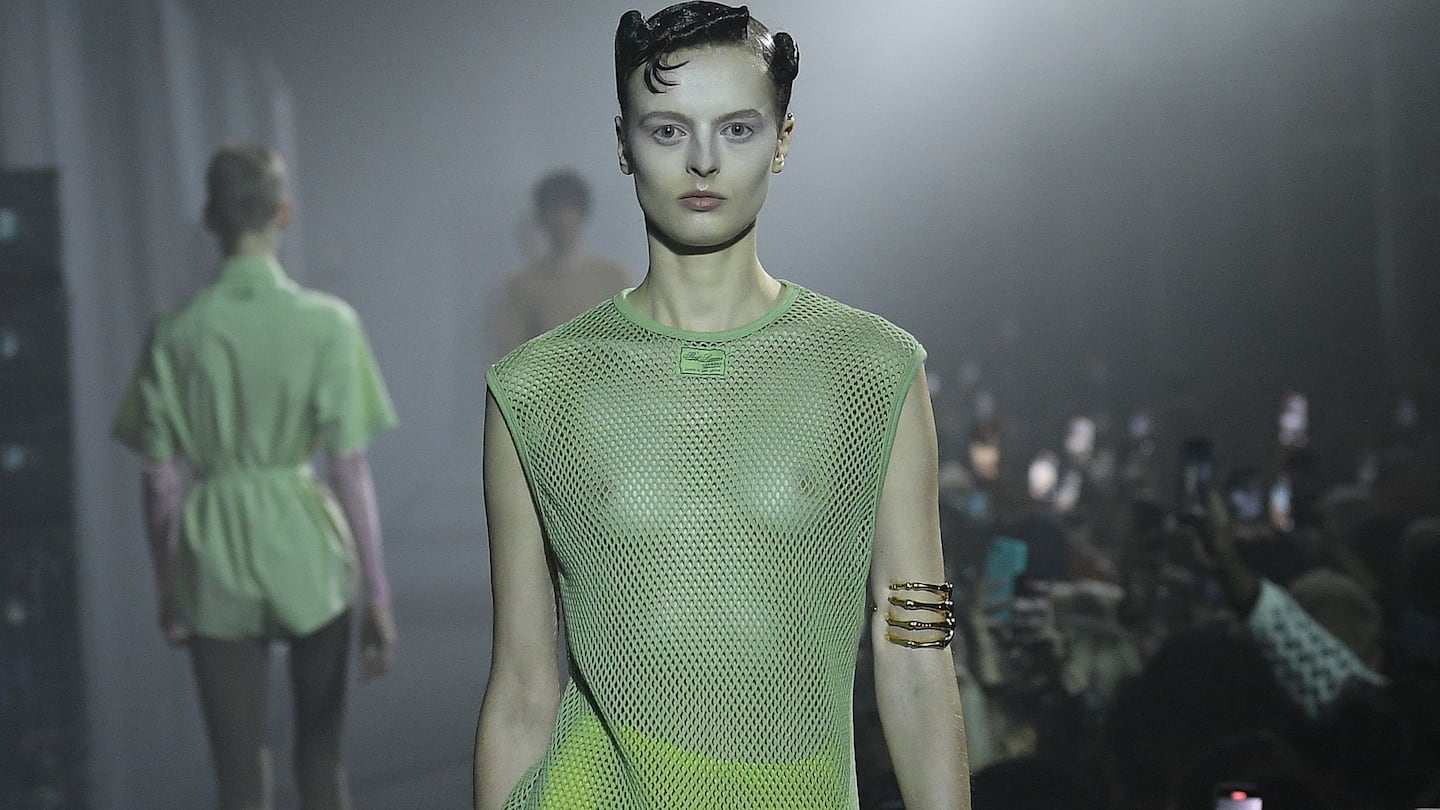
The Business of Fashion
Agenda-setting intelligence, analysis and advice for the global fashion community.

Agenda-setting intelligence, analysis and advice for the global fashion community.

LONDON — Later tonight, a party to celebrate a new Marc Jacobs flagship is set to close what some have started to call “Frieze Fashion Week,” a lineup of fashion events timed to coincide with the buzzy Frieze Art Fair. Everyone from Roksanda and Alexander McQueen to Celine and Off-White got in on the action. And let’s not forget Loewe, Byredo, Miu Miu, Moncler and Boss.
On Wednesday, art-loving designers Raf Simons and Jonathan Anderson were spotted among the crowds entering the fair’s “VIP” preview, which, in truth, felt more like a supermarket of art. But if consumption was the subtext at the week’s central event, there was a very different vibe amongst the crowd trekking East to Simons’ show-cum-rave at Printworks, a gigantic printing press turned dance club in Surrey Quays, the following night.
Simons, who rescheduled his London Fashion Week show to Frieze Week after the Queen’s death, invited practically all of London’s creative community: designers, students, artists. It’s not the first time Simons has staged a more democratic, standing-only show. He has long been interested in dismantling the fashion industry’s traditional hierarchy. But the sheer volume of people pressed up against a super long bar turned catwalk at Printworks was uplifting to see.
For Simons and his brand’s chief executive Bianca Quets Luzi, the idea to show in London was sparked by their visit to Frieze last year. “We were so positively surprised to see the amazing good and young vibe in the city,” said Luzi. “After the long period of Covid that kept us all inside, seeing those young kids so fresh and free in the streets of London, gave us so much energy.”
ADVERTISEMENT
The government was never going to stop London’s youth from holding illicit gatherings, especially after the “partygate” scandal revealed the Prime Minister himself to be a rule-breaker himself. And a sense of defiant freedom prevailed at the show last night.
0 of 64
Krikor throbbed seductively on the soundtrack as Simons showed a collection he described as his most minimal yet. Minimal indeed but with maximum energy. These were clothes meant for going out and about, even in their streamlined state. Thin knit cardigans became balletic unitards. Blazers and biker jackets were sliced into clubbing armour. Suit trousers were chopped into skirts that flapped about. Jackets came adorned with leather gloves at the elbows ready for some kind of gauntlet. There was even a whiff of indie sleaze in the use of polka dot tights.
The show notes read “Corps, Coda” and the body was on show for sure, but the collection was first and foremost a destruction of formal codes in line with Simons’ ongoing fascination with subverting uniforms: the prim and proper adapted for revelry and raving.
“Let’s drink the sea and dance” read one of the slogans, scrawled on calico tops, borrowed from Belgian artist Philippe Vandenberg. “Kill Them All and Dance” read another. But behind the darkness, there was something positive about them. “His works are not about killing people,” said Simons. “In order to start again you need to destroy everything first.”
Later that evening, Prada fragrance partner L’Oréal threw a launch party for its new Paradoxe perfume at shiny new music venue Here, buried beneath Denmark Street, London’s own Tin Pan Alley. One party-goer called it the “hipster Matrix.” It was certainly lightyears away from the ravey energy at Printworks, which is set to be demolished in the coming years. One had to wonder which venue was better for the underground music that Simons thrives on.
Elsewhere this week, a couple of London’s left field young designers staged smaller presentations. Talia Byre’s homespun wares, complete with exposed seams, fraying hems and wonky buttons made their debut in City of London lunchtime institution Sweetings. Byre’s collection was as nostalgic as her venue, harking back to pieces seen in her grandparents’ fashion boutique in Liverpool, updated for a world in need of soft pleasures.
Photographer and director Ronan McKenzie also showed her fledgling Selasi clothing line in the presentation that had models circling Saint John of Hackney Church in ergonomic, body-hugging knits, draped jersey and puffy leathers, rendered in shades of brown, lilac and red.
It all made for a nice mediation on what makes London’s fashion scene unique. See you at “Frieze Fashion Week” again next year?
Alexander McQueen and Roksanda kicked off a week packed with fashion events as wealthy art lovers descended on London.
From Simone Rocha to Richard Quinn, key shows on either side of the Queen’s funeral grappled with darkness and light, writes Susanna Lau.
From Harris Reed to Molly Goddard to JW Anderson, creativity and a growing sense of camaraderie ran through the first three days of London Fashion Week, writes Susanna Lau.
From where aspirational customers are spending to Kering’s challenges and Richemont’s fashion revival, BoF’s editor-in-chief shares key takeaways from conversations with industry insiders in London, Milan and Paris.
BoF editor-at-large Tim Blanks and Imran Amed, BoF founder and editor-in-chief, look back at the key moments of fashion month, from Seán McGirr’s debut at Alexander McQueen to Chemena Kamali’s first collection for Chloé.
Anthony Vaccarello staged a surprise show to launch a collection of gorgeously languid men’s tailoring, writes Tim Blanks.
BoF’s editors pick the best shows of the Autumn/Winter 2024 season.